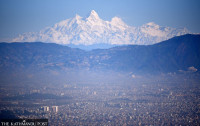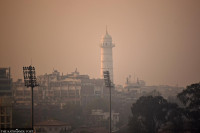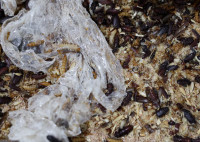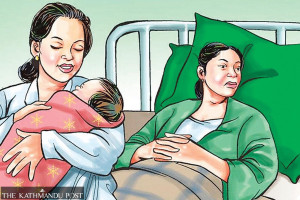Climate & Environment
As smog season looms, experts urge early action on air pollution
Disaster preparedness saved lives around Dashain. Now measures sought against emissions.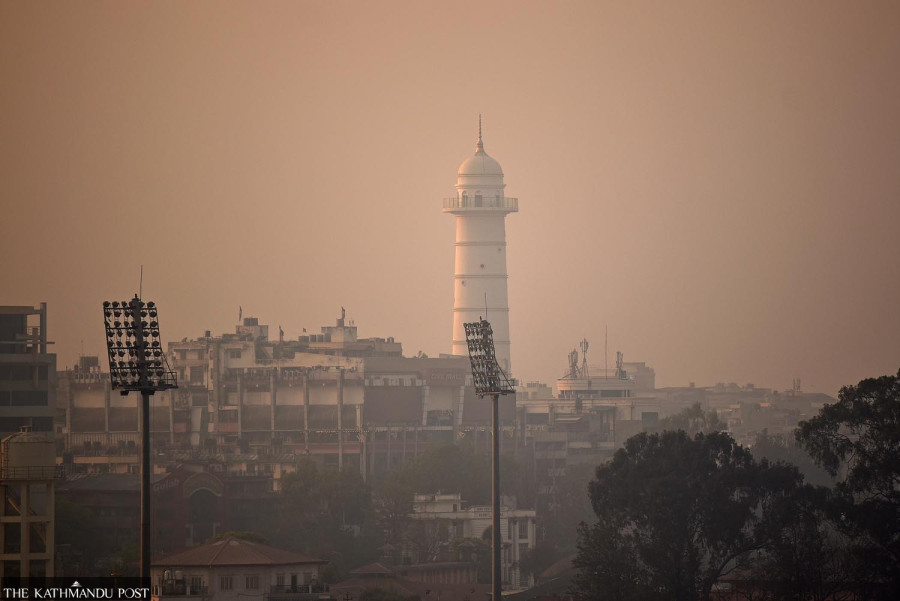
Arjun Poudel
Operation of long-distance vehicles was suspended for three days in the first week of October, in view of the forecast of excessive rainfall and the risk of floods, landslides and inundation.
Authorities stepped up preparations, alerted all agencies concerned about the risks, instructed them not to repeat past lapses, and kept helicopters on standby in all provinces for rescue operations.
Though commuters returning to their workplaces after Dashain and transport operators faced difficulties due to the travel ban, many viewed it as a prudent strategy.
“We minimised the loss of many lives by enforcing the travel ban,” said Bhusan Tuladhar, an environmentalist. “This shows that major disasters can be averted through timely and prudent decisions. The authorities must take similar preventive measures to tackle the severe air pollution expected during the dry season.” He said air pollution is no less serious than major disasters.
As the post-monsoon season has started and winter is approaching, concern is growing about the air quality, which typically deteriorates to hazardous levels. Hundreds of thousands of people from across the country suffer from polluted air every year.
Experts say that the worst-case scenario can still be averted, if all three tiers of government take the issue seriously and implement preventive measures.
Despite preventive measures, over 50 people died and thousands were injured in landslides and floods triggered by incessant rainfall during Dashain in eastern and central Nepal. However, experts say the loss and damage were lessened due to preparedness and mitigation measures taken in advance.
“Strict restrictions on open burning, enforcement of emission control measures, awareness drives, reducing forest fires, and prohibiting use of low grade coal in brick kilns will help improve air quality,” said Tuladhar. “By taking preventive measures in advance, we can not only improve air quality and save the environment but also avoid the health consequences on thousands of people, including pregnant women and small children.”
Experts say open fires emit particulate matter, nitrogen oxides, carbon monoxide, sulfur dioxide, lead, mercury and other hazardous pollutants that cause both short- and long-term health consequences.
According to doctors, poor air quality causes both short- and long-term effects on public health. Bad air quality can cause pneumonia, bronchitis, conjunctivitis, skin allergy, stroke and heart problems, among others, in the short term, ulcers and cancer of the lungs and intestine, kidney disease and heart problems in the long run.
Worsening air quality has not only affected people’s health but also hit the economy and hindered overall development.
Bhupendra Das, an air quality expert said: “Natural disasters cause immediate impacts but polluted air causes both immediate and long term impacts.”
Polluted air has been cutting short the lives of Nepali people by around five years, according to a report by the Air Quality Life Index (AQLI) that converts air pollution concentration into impact on life expectancy. AQLI is a metric produced by the Energy Policy Institute at the University of Chicago.
According to Das, stubble burning after harvest, household waste burning, brick kiln emissions, and forest fires significantly contribute to air pollution.
“Local governments can take strict actions to prevent waste burning, which will help in lessening air pollution," said Das. “They can play a role in making people aware about the risk of polluted air, prevent use of low grade coal in brick kilns and provide training and equipment to control forest fires.”
Studies show people in low- and middle-income countries are disproportionately affected by air pollution, which is responsible for more than 90 percent of deaths in these countries, according to the World Health Organisation.
Several studies carried out in the past in Nepal also showed that toxic air takes a huge toll on public health. Past studies also show that polluted air has been cutting Nepalis’ lives short.
Nepali lives are being cut short by around five years, according to a report by the Air Quality Life Index (AQLI), which converts air pollution concentration into an impact on life expectancy. AQLI is a metric produced by the Energy Policy Institute at the University of Chicago.
Air pollution has emerged as the number one risk factor for death and disability in Nepal, surpassing malnutrition and tobacco use, according to a World Bank report.




 10.12°C Kathmandu
10.12°C Kathmandu
